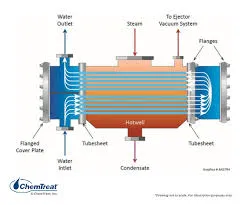- Afrikaans
- Albanian
- Amharic
- Arabic
- Armenian
- Azerbaijani
- Basque
- Belarusian
- Bengali
- Bosnian
- Bulgarian
- Catalan
- Cebuano
- China
- China (Taiwan)
- Corsican
- Croatian
- Czech
- Danish
- Dutch
- English
- Esperanto
- Estonian
- Finnish
- French
- Frisian
- Galician
- Georgian
- German
- Greek
- Gujarati
- Haitian Creole
- hausa
- hawaiian
- Hebrew
- Hindi
- Miao
- Hungarian
- Icelandic
- igbo
- Indonesian
- irish
- Italian
- Japanese
- Javanese
- Kannada
- kazakh
- Khmer
- Rwandese
- Korean
- Kurdish
- Kyrgyz
- Lao
- Latin
- Latvian
- Lithuanian
- Luxembourgish
- Macedonian
- Malgashi
- Malay
- Malayalam
- Maltese
- Maori
- Marathi
- Mongolian
- Myanmar
- Nepali
- Norwegian
- Norwegian
- Occitan
- Pashto
- Persian
- Polish
- Portuguese
- Punjabi
- Romanian
- Russian
- Samoan
- Scottish Gaelic
- Serbian
- Sesotho
- Shona
- Sindhi
- Sinhala
- Slovak
- Slovenian
- Somali
- Spanish
- Sundanese
- Swahili
- Swedish
- Tagalog
- Tajik
- Tamil
- Tatar
- Telugu
- Thai
- Turkish
- Turkmen
- Ukrainian
- Urdu
- Uighur
- Uzbek
- Vietnamese
- Welsh
- Bantu
- Yiddish
- Yoruba
- Zulu
Aug . 16, 2024 11:22 Back to list
China Heat Exchanger Solutions for High Efficiency Low Nitrogen Condensing Boilers
China's Heat Exchanger Innovations for Low Nitrogen Condensing Boilers
As the global energy landscape shifts towards sustainability and efficiency, the demand for advanced heating technologies has never been greater. In China, a country that has traditionally relied on fossil fuels, the transition to cleaner technologies is evident, particularly in the development of low nitrogen condensing boilers. A critical component of these systems is the heat exchanger, which plays a pivotal role in enhancing energy efficiency while reducing nitrogen oxide (NOx) emissions.
Heat exchangers in low nitrogen condensing boilers function by efficiently transferring heat from exhaust gases to the water used in the heating system. This process not only maximizes energy recovery but also contributes to the overall efficiency of the boiler. One of the defining features of condensing boilers is their ability to utilize the latent heat of vaporization from water vapor in the exhaust. By cooling the flue gases below their dew point, the heat exchanger captures this latent heat, improving the overall efficiency of the heating system, often exceeding 90%.
In the context of China's environmental policies and the push for cleaner energy solutions, the development of low nitrogen condensing boilers equipped with high-performance heat exchangers is essential. The Chinese government has implemented stricter regulations on NOx emissions to combat air pollution, particularly in urban areas. The use of low nitrogen condensing boilers equipped with advanced heat exchangers can significantly reduce NOx emissions, making them a vital technology in the nation’s efforts to meet environmental standards.
Several Chinese manufacturers are at the forefront of producing innovative heat exchanger designs tailored for low nitrogen condensing boilers. These designs focus on enhancing heat transfer efficiency while ensuring that the materials used can withstand the corrosive nature of condensate. For instance, stainless steel and advanced composite materials are increasingly being employed to improve durability and heat transfer capabilities. These advancements not only increase the lifespan of the heat exchanger but also lower maintenance costs over time.
china heat exchanger for low nitrogen condensing boiler

Another important aspect of heat exchangers in these boilers is their compact design. As urban areas in China expand, the need for space-efficient heating solutions has become crucial. Modern heat exchangers are engineered to occupy less space while delivering higher performance. This compactness facilitates easier installation in various settings, from residential apartments to commercial buildings, thus broadening the applicability of low nitrogen technology.
Additionally, the integration of smart technologies into heat exchangers is enhancing their functionality. By incorporating sensors and IoT devices, manufacturers can offer smart monitoring systems that track the performance of the heat exchanger in real-time. Such technological integration allows for predictive maintenance and more efficient operation, ultimately leading to lower energy consumption and increased user convenience.
China's commitment to reducing carbon emissions while ensuring robust economic growth establishes the foundation for continuous innovation in heating technologies. The advancements in heat exchangers for low nitrogen condensing boilers represent a critical step toward achieving these dual objectives. As the nation continues to embrace greener technologies, investment in research and development will be paramount. This investment will not only yield more efficient energy solutions but also contribute significantly to global efforts to combat climate change.
In conclusion, the ongoing developments in heat exchanger technology for low nitrogen condensing boilers highlight China's proactive approach to addressing energy efficiency and environmental concerns. With a focus on innovative materials, compact design, and smart technology integration, these advancements signify a critical move towards sustainable heating solutions that align with the country's environmental goals. As the industry evolves, it is clear that heat exchangers will continue to play a vital role in transforming energy utilization in China and beyond.
-
8mm Thin-Walled Cast Steel Manhole Cover Pallet Bottom Ring | Durable
NewsAug.04,2025
-
Premium Cast Iron Water Main Pipe: Durable, Corrosion-Resistant
NewsAug.03,2025
-
Durable Cast Iron Water Mains | AI-Optimized Systems
NewsAug.02,2025
-
High-Efficiency Propane Boiler for Baseboard Heat | Save Energy
NewsAug.01,2025
-
Premium Source Suppliers for Various Gray Iron Castings
NewsJul.31,2025
-
Durable Cast Iron Water Main Pipes | Long-Lasting
NewsJul.31,2025


